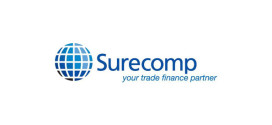
CHRIS PRINCIPE looks at how transaction banking can use data to make money and keep customers happy
over the past year it has been all but impossible to avoid the big data phenomenon and there has certainly been no shortage of media build-up regarding its promise. But strip away all the marketing hype and there is still little doubt that the exploding volume, velocity and variety of data are having real business implications across domains as diverse as healthcare, manufacturing, retail, and banking.
But what about big data in trade? How can it be accessed and utilised by banks to drive profitability and deliver a better customer experience?
Let’s start with what big data means and why it is fast becoming a topic across banking.
In 2012, international information technology researcher Gartner updated its definition as follows: “Big data is a high-volume, high-velocity, and/or high-variety information asset that requires new forms of processing to enable enhanced decision making, insight discovery and process optimisation.”
Pretty fancy, but pretty telling. First, though, you need to know what data is and have some idea of its sheer size: Wal-Mart handles more than one million customer transactions every hour and Facebook cradles 40 billion photos in its user base. Also, there are 4.6 billion mobile-phone subscriptions worldwide.
If you start to think about these numbers – and banks are right there in terms of data volumes – then you can get the scope, understand the value and see the challenge.
Traditionally, bankers in trade have done very well at tracking and inspecting corporate customer activity. This has been a key function of trade for decades, long before there was KYC and the other compliance tools and regulations of today. In fact, it was trade that first scrutinised a customer’s validity, intentions and business motivations.
Trade’s longstanding practice of understanding and examining their customers’ business has given banks a wealth of information that is the essence of the big data movement. However, the challenge at the heart of big data projects is cost-effectively processing this data to drive enhanced insights and decision making to the benefit of customers. Banks unfortunately have tended to lag in the utilisation of the “real wealth” they hold, which is not cash but data. Much of this is a result of a lack of visibility, understanding and the innovative uses to which significant customer data can be put.
What the bank knows
Historically, given their unique transactional position, banks have accumulated a vast amount of detailed customer data. Banks have the data to know if their customers are buying domestically or internationally because of the transactions pumped through trade, FX and payments.
The bank knows from these transactions which country, state, currency, frequency, amounts, parties, timings, products, commodities, partners, ID number (bill of lading, PO, invoice, ASN, etc.), contacts, service providers etc. In short, it has access to what a customer buys, when, from whom, the shipping – almost everything in fact that can help their customers. Unfortunately, though, in most cases this information is not being used. Banks must innovate to leverage big data in order to create “business intelligence” from this unique view of each customer’s activities.
If a bank knows what their customers are doing, such as buying certain goods from a particular country, then they can tailor data to a customer package – with country information, shipping suggestions, insurance or FX contract offers or a free trade officer consultation, as examples – and maybe even a special offer from time to time such as commission-free currency. If customers don’t ship overseas, then their benefits package could include local industry news, insurance discounts or access to distributor financing.
Though many banks may not yet have these capabilities, there are things they can do now that would help them to know their customers better – by simply talking to them. Banks shouldn’t just offer a standard service that is reactive, waiting for a customer to reach out and enquire. At best, this passive approach allows the bank only to give a fixed answer and no more! Yes, customer service has been provided and the immediate need satisfied, but is this the basis for improving the customer relationship?
Proactive use of existing data within a bank is a strong starting point. Take, for example, a customer entering an application through the bank’s trade portal for the purchase of goods from Japan. Once the bank processes and issues this LC instrument notifying their customer of the issuance, why not add an additional message offering FX services and whom to contact directly? This interaction provides both the customer and bank with valuable customer data, clearly demonstrates an understanding of customer needs and provides a cost effective cross-selling opportunity.
Many banks know their customers are doing business overseas and so they should use that information to sell currency exchange, insurance or financing.
There is, though, a two-fold problem. First, a bank can’t do everything, because it takes significant time and resources to manage any IT-based initiative. Secondly, managers have an almost overwhelming tendency to focus first on opportunities that are near to hand and have a quick, visible pay-off. Initiatives have to be co-ordinated and focused on the right long-term strategic goals to be effective. If the availability of big data in trade encourages a massive flock of initiatives, it will do more harm than good. Think of it this way: the big money is not in using pieces of data efficiently, but rather in changing the way data is analysed and utilised.
So what specifically is trade data? Within a transaction there are many clues for the bank to understand their customers better and tailor services or relevant information for them. For example, a transaction contains shipping information such as the shipping company, country shipped from/to and products bought/sold.
Now if a bank takes that one customer’s information across a “big data approach” of its whole trade customer base, it may find additional customers who use the same shipper, and buy or sell similar products. That would allow the bank to reach out to help those customers to work together for better rates and services. Or the bank itself could approach that shipping company on behalf of a number of customers and negotiate a preferred group rate.
This works in a similar fashion for customers doing business in the same country. Those customers, brought together by the bank, could share experiences and look for a bank “lead” that also addresses prime offers for them. Based on customer feedback, the bank could then provide reviews of third parties similar to the way retailers set up product recommendations written by consumers. These could relate positive and negative experiences that customers have had in a particular country, with a particular shipper or local companies.
Also, customers who are involved in the same field either as buyers or sellers could be formed into a “bank group”, where they would have the opportunity to do business with each other. The bank could then offer a group discount or bonus as there is a great advantage to the bank to encourage transactions within its own customer base. This action could also incentivise other companies to join the bank.
Eventually, customers could collect loyalty points to be used to offset fees, as product discounts and to strengthen their internal bank rating. Clearly, if a customer is gaining points by directing a greater amount of business to the bank’s existing customers, then he, or she, becomes a more valuable customer.
By leveraging bank-owned data there is much that can be done to increase customer stickiness, and the stickier those relationships the less likely it would be for a customer to change banks. Conversely, it would make it more likely that they would approach their current bank for even more services.
The sources for success in these initiatives is already inside banks today. It involves taking what is known about customers and utilising it in a different and expanded way. This starts with a distinct shift from merely reacting to customers to hands-on engagement that yields value.
By demonstrating to customers that you know them, big data offers huge opportunities that result in true customer engagement. The “promise” of big data is to make banks better, and not just to gain small efficiencies. This comes down to part technology, part management and a ton of innovative vision! n
Chris Principe has worked in international trade as an exporter, importer and solutions provider for more than 25 years. In his current position at ACI Worldwide – a leading provider of software and services solutions to initiate, manage, secure and operate electronic payments for major banks, retailers and processors around the world – as the product manager global trade and supply chain, he is responsible for executing strategy for sales and products focused on financial supply chain management and open-account processing as well as traditional trade finance.
 Cash And Trade Magazine For Cash and Trade professionals in the Middle East
Cash And Trade Magazine For Cash and Trade professionals in the Middle East





One comment